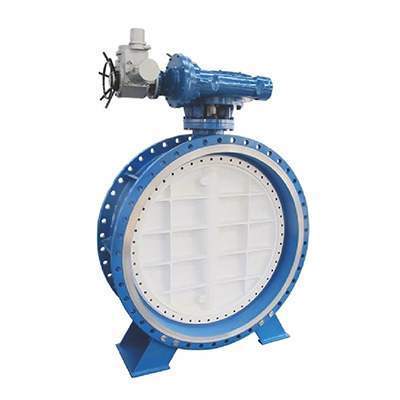Welcome to My Blog!
Before we dive into the content, I’d love for you to join me on my social media platforms where I share more insights, engage with the community, and post updates. Here’s how you can connect with me:
Facebook:https://www.facebook.com/profile.php?id=61563865935136
Now, let’s get started on our journey together. I hope you find the content here insightful, engaging, and valuable.
Introduction

Selecting the right valve for your industrial or commercial application is critical to ensuring operational efficiency and longevity. Stainless steel butterfly valves are widely recognized for their durability, corrosion resistance, and versatility across various industries, including water treatment, chemical processing, and food production. At Fanlei, a leading valve manufacturing company specializing in research, design, production, and sales, we understand the importance of choosing high-quality valves tailored to your needs. This blog will guide you through the process of picking the best stainless steel butterfly valves, covering key considerations, technical specifications, and practical tips to make an informed decision.
Why Choose Stainless Steel Butterfly Valves?
Stainless steel butterfly valves are favored for their unique combination of strength and lightweight design. The material’s resistance to rust and corrosion makes these valves ideal for harsh environments, such as marine or chemical applications. Additionally, their compact structure allows for easy installation and maintenance, reducing downtime and operational costs. Fanlei’s commitment to producing high-quality valves ensures that our stainless steel butterfly valves meet stringent industry standards, providing reliable performance for a wide range of applications.
Key Features to Look for in Stainless Steel Butterfly Valves
When selecting stainless steel butterfly valves, certain features can significantly impact their performance and suitability for your system. Below are the critical factors to consider:
Material Grade of Stainless Steel
The grade of stainless steel used in butterfly valves, such as 304 or 316, determines their corrosion resistance and durability. Grade 316 is often preferred for more aggressive environments due to its higher molybdenum content, which enhances resistance to pitting and crevice corrosion. Fanlei offers valves in various grades to suit diverse operational needs.
Disc and Seat Design
The disc and seat are the core components of butterfly valves, controlling flow and ensuring a tight seal. A well-designed disc minimizes turbulence, while a resilient seat, often made of materials like EPDM or PTFE, ensures leak-proof performance. Look for valves with precision-engineered components for optimal flow control.
Actuation Options
Stainless steel butterfly valves can be manually operated or equipped with actuators (pneumatic, electric, or hydraulic) for automated control. The choice depends on your system’s complexity and operational requirements. Automated valves are ideal for applications requiring frequent adjustments or remote operation.
Understanding Valve Sizes and Pressure Ratings
Selecting the correct size and pressure rating is essential to ensure compatibility with your piping system. Stainless steel butterfly valves are available in a wide range of sizes, typically from 2 inches to over 48 inches, and pressure ratings, such as ANSI Class 150 or PN16. Oversizing or undersizing a valve can lead to inefficiencies or system failures. Consult with experts, like those at Fanlei, to determine the appropriate specifications for your application.
Applications of Stainless Steel Butterfly Valves
Stainless steel butterfly valves are versatile and used in numerous industries due to their robust construction and reliable performance. Common applications include:
- Water and Wastewater Treatment: Their corrosion resistance makes them ideal for handling potable water, sewage, or treated effluents.
- Chemical Processing: These valves withstand aggressive chemicals and high temperatures, ensuring safe and efficient operations.
- Food and Beverage Industry: Hygienic designs meet stringent sanitary standards, making them suitable for food-grade applications.
- HVAC Systems: Compact and lightweight, they regulate airflow and water in heating and cooling systems.
Fanlei’s stainless steel butterfly valves are engineered to meet the specific demands of these industries, ensuring durability and compliance with regulatory standards.
Comparison of Stainless Steel Butterfly Valve Types
To help you choose the right valve, the following table outlines the main types of stainless steel butterfly valves, their features, and typical applications. This comparison excludes brand-specific details and focuses on general characteristics.
| Valve Type | Features | Typical Applications | Advantages |
|---|---|---|---|
| Concentric Butterfly Valve | Simple design, rubber-lined seat, cost-effective | Water treatment, HVAC, general-purpose | Low cost, easy maintenance |
| Double Offset Butterfly Valve | Reduced seat wear, better sealing at higher pressures | Chemical processing, oil and gas | Longer lifespan, improved sealing |
| Triple Offset Butterfly Valve | Metal-to-metal sealing, zero leakage, high temperature/pressure tolerance | Power generation, petrochemicals | High performance, suitable for extreme conditions |
This table serves as a quick reference to understand the differences between valve types and their suitability for specific applications. Fanlei offers all these types, allowing you to select the best option for your system.
Installation and Maintenance Tips for Stainless Steel Butterfly Valves
Proper installation and maintenance are crucial to maximizing the lifespan and performance of stainless steel butterfly valves. Here are some practical tips:
Installation Guidelines
- Ensure the pipeline is clean and free of debris before installing the valve to prevent damage to the disc or seat.
- Align the valve properly with the pipeline flanges to avoid stress on the valve body.
- Use appropriate gaskets and bolts to secure the valve, following manufacturer torque specifications.
Maintenance Best Practices
- Regularly inspect the valve for signs of wear, corrosion, or leakage, especially in high-cycle applications.
- Lubricate moving parts, such as stems and actuators, to ensure smooth operation.
- Replace worn seats or seals promptly to maintain a tight seal and prevent leaks.
Fanlei provides detailed installation and maintenance guides with our stainless steel butterfly valves, ensuring customers can achieve optimal performance and longevity.
Standards and Certifications for Stainless Steel Butterfly Valves
Compliance with industry standards and certifications is a key indicator of valve quality. Look for stainless steel butterfly valves that meet standards such as:
- API 609: Specifies design and performance requirements for butterfly valves.
- ISO 5208: Defines testing procedures for valve leakage rates.
- ASME B16.34: Covers pressure-temperature ratings for valves.
Certifications like CE, FDA (for food-grade applications), or ATEX (for explosive environments) may also be relevant depending on your industry. Fanlei’s valves are manufactured to comply with these standards, ensuring reliability and safety across global markets.
Cost Considerations When Choosing Stainless Steel Butterfly Valves

While stainless steel butterfly valves may have a higher upfront cost compared to other materials like cast iron, their long-term benefits often outweigh the initial investment. Factors influencing cost include:
- Material Grade: Higher-grade stainless steel (e.g., 316) is more expensive but offers superior corrosion resistance.
- Valve Size and Pressure Rating: Larger valves or those designed for high-pressure applications typically cost more.
- Actuation Type: Automated valves with actuators are pricier than manual ones but save on labor costs over time.
By choosing high-quality valves from a trusted manufacturer like Fanlei, you can minimize maintenance costs and downtime, ensuring a cost-effective solution in the long run.
Conclusion
Selecting the best stainless steel butterfly valves requires careful consideration of material grades, design features, application requirements, and industry standards. By understanding these factors and choosing a reliable manufacturer, you can ensure optimal performance and durability for your system. At Fanlei, we are dedicated to providing high-quality valves that meet the diverse needs of our customers. Ready to find the perfect valve for your application? Contact us today to explore our range of stainless steel butterfly valves and get expert guidance.
FAQ
What are stainless steel butterfly valves used for?
They are used to regulate or isolate flow in industries like water treatment, chemical processing, and food production due to their corrosion resistance and durability.
How do I choose the right size for a stainless steel butterfly valve?
Match the valve size to your pipeline diameter and ensure the pressure rating aligns with your system’s requirements. Consult with manufacturers like Fanlei for precise sizing.
Are stainless steel butterfly valves suitable for high-temperature applications?
Yes, especially triple offset designs with metal seats, which can handle high temperatures and pressures effectively.
